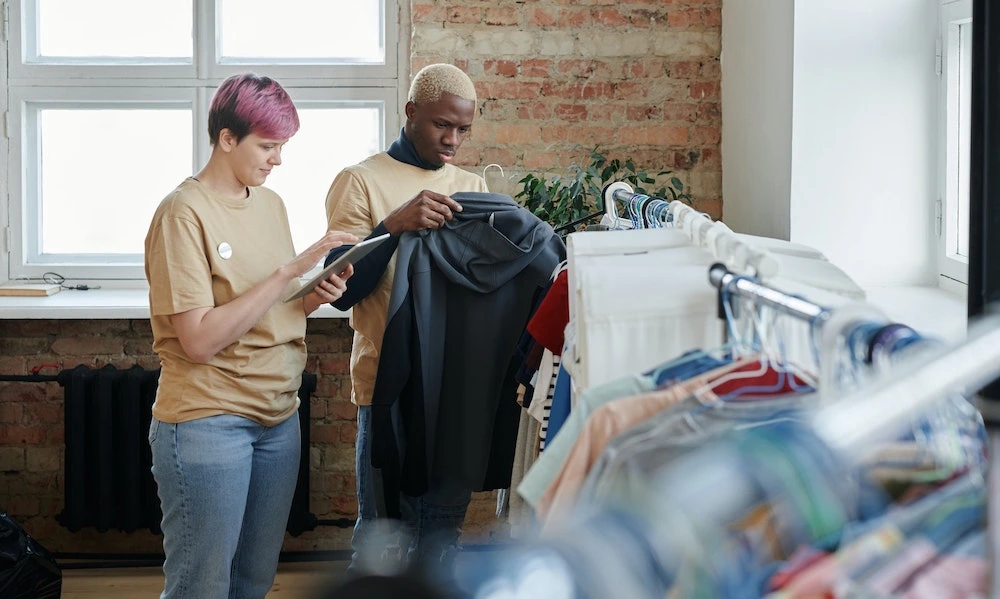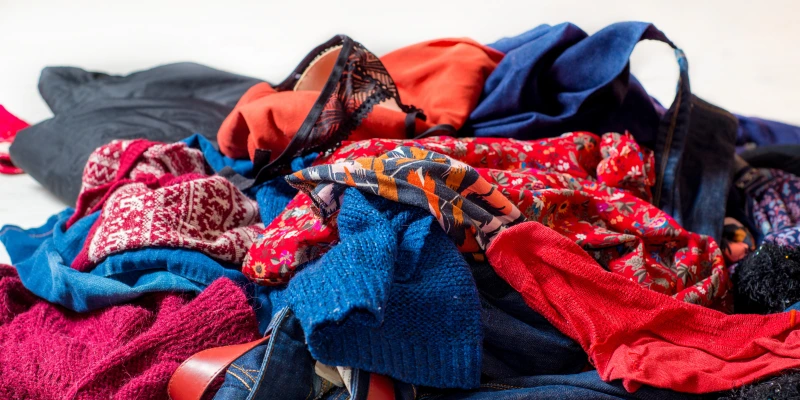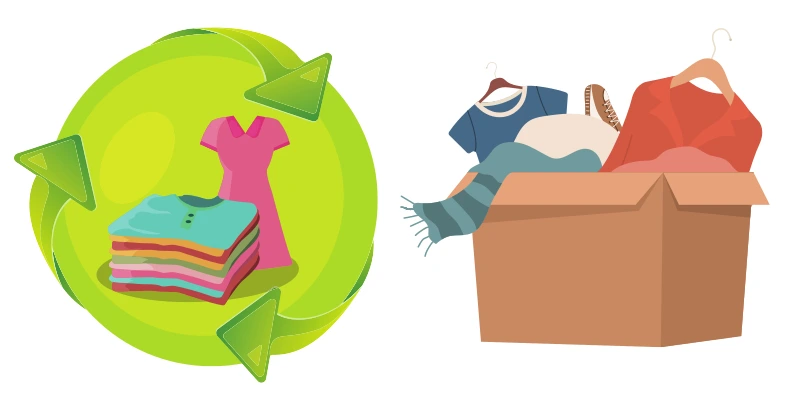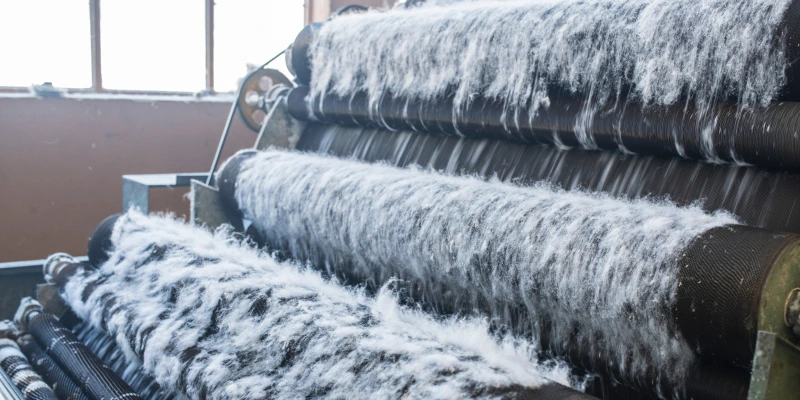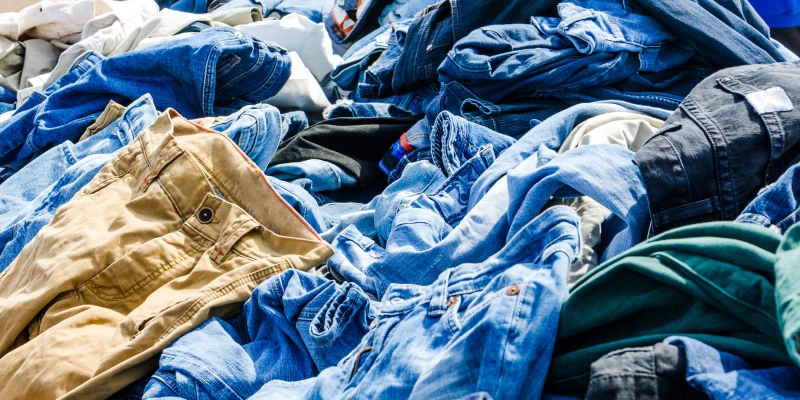By: Behnam Ghasemi / Kohan Textile Tournal
Consumption of second-hand clothes in Africa and sustainable fashion in Europe
In recent times, the discourse surrounding sustainable fashion and textile production has gained significant traction, particularly in developed regions such as Europe and America. This surge in awareness has led to notable shifts in how both consumers and producers approach the creation and acquisition of textiles and garments.
Across Europe, prominent brands have ventured into collecting, refurbishing, and reselling a diverse range of second-hand clothing, footwear, bags, and even expanded into the realm of furniture and household items, exemplified by industry giant IKEA. This emerging trend underscores the potential for products to be rejuvenated and reintegrated into the consumption cycle through minor repairs and updates.
In numerous nations, digital platforms and applications have emerged to facilitate the exchange, sale, and purchase of second-hand apparel.
Research has shown that if the clothes are produced with good quality and are properly used and maintained, can remain in the consumption cycle for up to twenty years.
Given these insights, it becomes evident that it might be time for a fresh perspective on the second-hand clothing business in Africa. Rather than treating this industry as a challenge, African governments could consider regulations that bolster domestic production and sustain the cycle of clothing reuse.
The Golden Opportunity of Investing in Garment Recycling for Africa
The concept of second-hand clothing and recycling presents a golden opportunity for Africa. Transforming the trajectory of second-hand clothing from Europe to Africa into a sustainable strategy could lead to the creation of recycled products. As global interest in recycled goods grows, this presents a significant advantage for Africa.
Imagine a scenario where second-hand clothing is gathered from Europe and transported to Africa. After being utilized for several years, it would then find its way to a recycling facility on the continent. This facility would transform the garments into 100% recycled yarn, which could then be exported to European manufacturers specializing in recycled apparel.
This innovative cycle has the potential to transform the second-hand clothing trade in Africa from a perceived threat into a lucrative opportunity. Rather than opposing the import of used clothing, African nations could legalize and regulate it, resulting in the recycling of the substantial influx of imported garments. This transformation could yield economic benefits through the export of recycled products, effectively turning second- hand clothing into a valuable resource.
An advocate for the textile industry in Nigeria informed the reporter from the Kohan Textile Journal regarding this matter: “I believe that the used clothing market holds strong potential in Africa, particularly in Nigeria – my home country. During my younger years, I was engaged in selling second-hand garments. I used to travel to Cotonou in the Benin Republic to purchase clothing in bales and then sell it at retail. I have some insights. Transporting goods in containers to Nigeria seems like a viable option. However, there are certain challenges to navigate, primarily due to the fact that used clothing is considered contraband. Nevertheless, by collaborating with a reputable customs clearance agent, the business prospects remain promising.”
She added: “Originating from Nigeria and having conducted business in Lagos, I have established connections with dependable marketers. Additionally, I possess a warehouse space that could serve as a distribution point before sending items to various locations and cities.”
Second-Hand Clothing Business in Africa
The second-hand Clothing trade in Africa does have several positive aspects:
Second-hand clothing, often referred to as “mitumba” in Africa, has become a significant industry and a crucial part of the economy in many African countries. The sustainability of this sector, however, is a complex issue that requires comprehensive analysis.
1. Economic Benefits: Second-hand clothing business provides affordable and accessible clothing options for many Africans who cannot afford new clothes. It creates employment opportunities along the value chain, from collection and sorting to distribution and sales. The trade also generates revenue for African countries by importing used clothing, contributing to the national economy.
2. Reducing Waste: The importation of second-hand clothing also assists in reducing textile waste by giving new life to clothes that would otherwise end up in landfills. This is particularly important as the fashion industry is notorious for its environmental impact and excessive production. By extending the lifespan of garments, the industry contributes to waste reduction and conservation of resources.
3. Affordability and Accessibility: Second-hand clothing business provides affordable options for many people in Africa who cannot afford brand-new clothes. It allows individuals to access a wider range of clothing styles and options that may not be available or affordable otherwise.
4. Social Impact: Second-hand clothing has also been beneficial in terms of social impact. It enables people to express themselves through fashion and helps create a sense of identity and belonging. This can have positive effects on self-esteem and confidence.
5. Environmental Conservation: By reusing and extending the lifespan of clothing, the trade helps reduce textile waste and lessens the burden on landfills. It indirectly contributes to the conservation of resources, such as water and energy, that would be required to produce new clothing items.
6. Fashion Trends and Innovation: The trade in second-hand clothing can stimulate creativity and innovation in fashion. It enables individuals to experiment with different styles, mix vintage and modern pieces, and create personalized looks. This can contribute to the emergence of unique fashion trends and enhance individual expression.
7. Economic Stimulus: The importation and trading of second-hand clothing also generate revenue for African countries through taxes and duties. This can help boost local economies and contribute to national development.
8. Philanthropic Support: Some organizations and charities collect and donate second-hand clothing to African countries as part of humanitarian aid efforts. This assistance can provide essential clothing items to those in need during times of crisis or natural disasters.
Disadvantages of Second-Hand Clothing Business in Africa
1. Local Textile Industries: The dominance of the second-hand clothing market has often been criticized for hindering the growth of local textile industries in Africa. As cheap imports flood the market, it becomes challenging for local producers to compete. Supporting local manufacturing can enhance sustainability by promoting self-sufficiency, job creation, and reducing carbon emissions associated with long-distance transportation.
2. Dependency and Neocolonialism: Critics argue that the reliance on second-hand clothing perpetuates a system of dependency on Western nations. The importation of used clothes creates a market for cheap foreign products, inhibiting the development of domestic industries and stifling local creativity and entrepreneurship.
3. Quality and Health Concerns: Second-hand clothing may not always meet safety and quality standards. Some imported clothes may contain harmful chemicals or be damaged due to wear and tear, posing health risks to consumers. Ensuring rigorous quality control measures can mitigate these concerns and promote the safety and satisfaction of buyers.
To enhance the sustainability of the second-hand clothing industry in Africa, a balanced approach is needed. This can involve supporting local textile industries, encouraging fair trade practices, promoting proper quality control and regulation, and investing in education and training to develop skilled workforce.
Additionally, initiatives that focus on recycling/upcycling and reducing waste in the fashion industry can complement the second-hand clothing market and contribute to a more sustainable fashion ecosystem in Africa.





